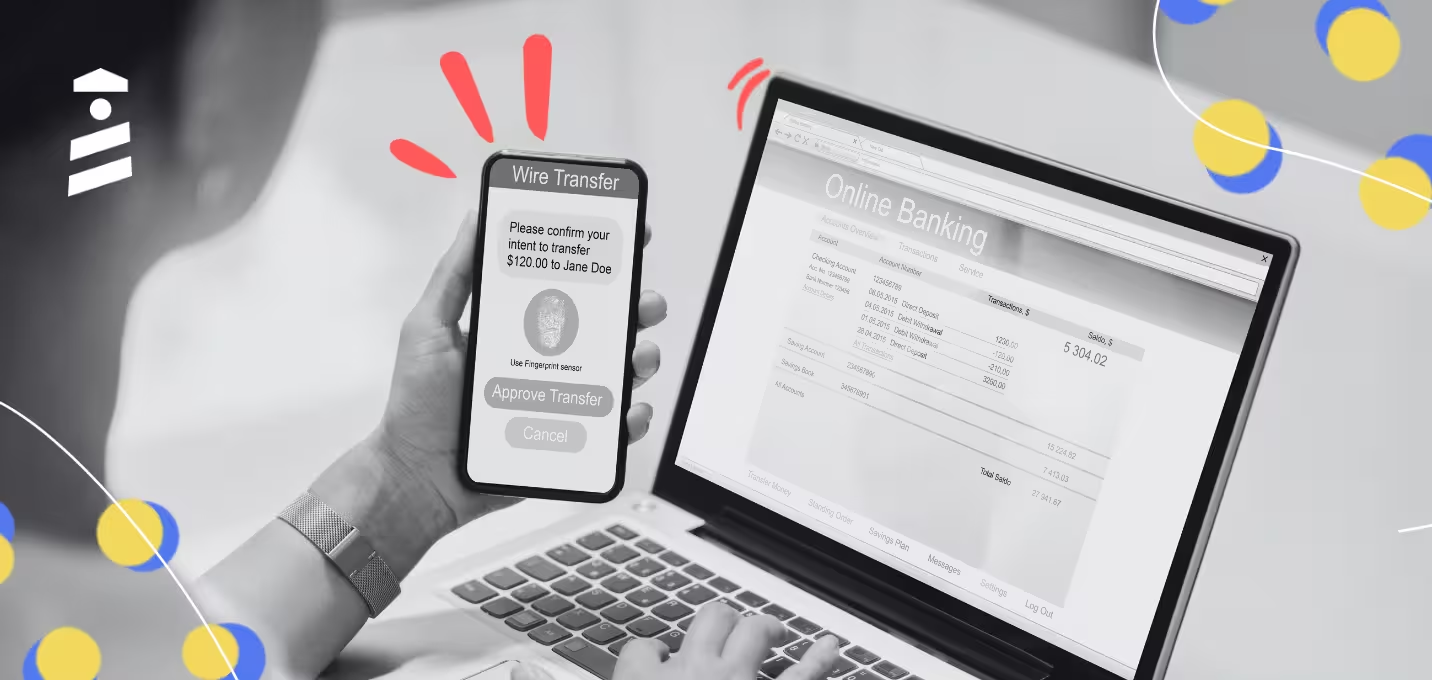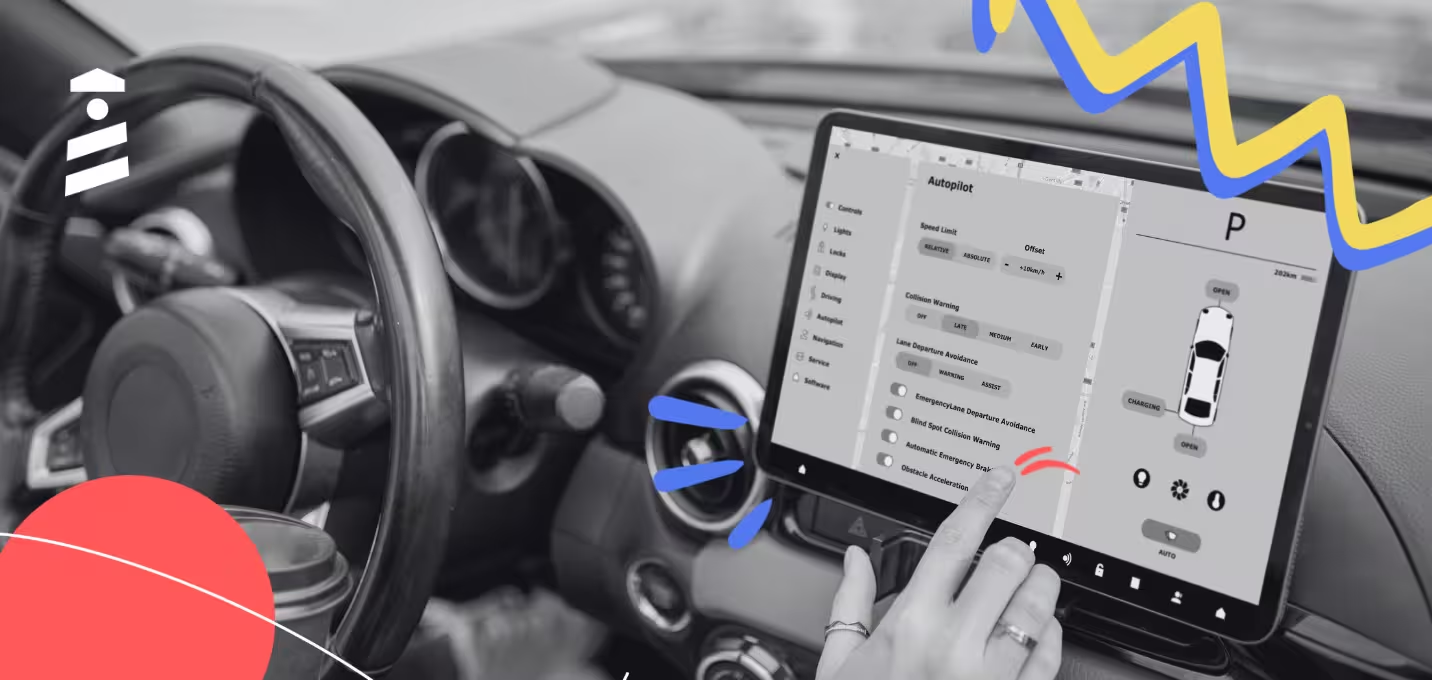

One way or another, Inline Manual does justice to its name.
For some, it's because it includes some beautiful manuals.
For the rest, it's because some work needs to be done manually.
If you share the same idea with the latter crowd, jump in 'cause I'm about to drop some alternatives for you ⬇️
TL;DR
- UserGuiding: feature diversity for adoption and onboarding, better pricing, user-friendly interface.
- Pendo: identical onboarding capabilities, better product analytics, and more features.
- Appcues: A/B testing for onboarding elements, easy-to-use with drag-and-drop assets, similar customer service experience.
- Userlane: identical features, employee training focus, intuitive user interface.
- Stonly: knowledge management focus, with an AI assistant.
What Inline Manual Does Well
1- Customization

Inline Manual is a well-designed application that offers strong customization levels, allowing you to edit the tool to match your general theme and style.
With a large amount of customization options, you'll be able to build in-app content for your users and customize each item without any prior technical knowledge.
Customization through this tool will help you better target your users, announce new features more effectively, and get users to adopt them more quickly.
2- Customer Support
One thing that all customers of Inline Manual agree on is that they deliver exceptional support.
The customer support team comes with ideal and precise solutions within a short amount of time.
Not only the live support but also the help center of Inline Manual is praised highly, as it has detailed information regarding the topics you might need help with, especially for users who aren't tech-savvy.
Drawbacks of Inline Manual
1- User-friendliness

For a tool that focuses on user experience, Inline Manual fails to meet users' expectations by not offering an intuitive design.
The default UI makes it difficult to figure out and familiarize yourself with the platform, as some features and buttons aren't where you'd expect them to be, and the look is outdated.
2- Not Code-Free
Inline Manual isn't completely no-code, and you need proper technical knowledge to integrate, customize, and maintain the application—even though it states it should be code-free after the installation process.
5 Best Inline Manual Alternatives
1. UserGuiding - focuses on product adoption with robust onboarding elements

- Capterra: ⭐ 4.7/5 (51 reviews)
- TrustRadius: ⭐ 9.3/10 (4 reviews)
- G2: ⭐ 4.6/5 (257 reviews)
UserGuiding is a product adoption platform that helps you deliver better user experiences and create a more engaged user base.
To do so, this tool offers exceptional onboarding services and powerful features that enable users to find value within your product quicker than ever.
UserGuiding Features
1- Tooltips

Increasing interactivity, tooltips capture the attention of users without breaking user engagement.
These elements enable you to present specific parts of your product to your audience or can be used in modals when building product tours that drive them to take different actions.
2- Product Updates

Product updates is all about forming a connection between your product and users for them to understand the new features you release.
Through a changelog, you can document all of your notable changes in one place where your users can see and leave feedback for every update.
Increasing visibility and collecting feedback on your new features have never been easier!
3- In-App Surveys

In-app surveys are a must to get to the bottom of an issue... or just to hear what your users have to say.
With UserGuiding, you can collect real-time user feedback within your application through various surveys, ready-made or created from scratch.
What's even better is that you'll be able to segment your users based on the answers you gather!
Pricing
UserGuiding’s pricing plans are based on the number of active users you have. When billed yearly:
- Starter Plan: Starting from $174/month.
- Growth Plan: Starting from $349/month.
- Enterprise Plan: Custom quote.
UserGuiding vs Inline Manual
From checklists to walkthroughs, both Inline Manual and UserGuiding have the necessary set of features to offer an ideal onboarding process. However, due to Inline Manual's outdated interface, it becomes harder to use these elements and create a flow, which isn't the case for UserGuiding.
When it comes to more adoption-related features, Inline Manual falls short since it lacks features to support your efforts. UserGuiding, on the other hand, has several features, such as a product updates page, to support your efforts in increasing feature adoption.
A big difference between these two tools is that UserGuiding offers a no-code experience, while Inline Manual isn't code-free and requires action to maintain the platform and its components.
Inline Manual doesn't reveal its pricing plans, but it starts from $158 a month for 250 MAUs . As UserGuiding starts from $174 for 2,000 MAU and has transparent plans with detailed information on each plan and Inline Manual requires $202 per month for 2,000 MAU, the latter becomes a more expensive platform.
Sign up for a free UserGuiding trial today!
2. Pendo - best for those looking for a tool that feeds onboarding with analytics and valuable insights

- Capterra: ⭐ 4.5/5 (215 reviews)
- TrustRadius: ⭐ 8.3/10 (186 reviews)
- G2: ⭐ 4.4/5 (1,423 reviews)
Pendo is an application experience software that helps you deliver a better version of your product experience to users.
For example, you can obtain data on product usage, uncover valuable insights, and optimize your digital flow accordingly.
Pendo Features
1- Product Analytics

Pendo's analytics section can help you analyze feature usage and understand which features have been overlooked.
Product managers can check which features are users' favorites and which features should be promoted and prioritized based on the data obtained, improving adoption single-handedly.
On this feature, one big plus is the fact that you can obtain product insights across both web and mobile devices.
2- User Onboarding

For user onboarding, Pendo offers several items, including guides, hotspots, and checklists.
Through the feature "Guides," you can enable in-app elements to pop up on the interface to highlight specific sections of your product and boost engagement.
Also, you can use these items to create a full onboarding process in a product tour so that users can quickly reach their Aha! moment.
Pricing
Pendo doesn't reveal its pricing plans, having four custom-quoted plans. However, it offers a freemium plan that allows 500 monthly active users.
Pendo vs Inline Manual
Pendo and Inline Manual have a lot in common, including onboarding materials—one thing Inline Manual doesn't have is analytics capabilities. While Inline Manual has a very simple analytics section, Pendo has powerful product analytics that enables you to make more data-driven decisions.
Financially, Inline Manual is more affordable since Pendo is known to have a pricing structure that's on the expensive side of the spectrum (even though the plans aren't revealed 🤫).
Another point regarding pricing is that Inline Manual offers a 14-day free trial, while Pendo has a freemium plan that you can use for up to 500 MAUs, making Pendo more startup-friendly.
Last but not least, Pendo is home to various features that Inline Manual lacks; thus, if you have a limited use case, you might want to move forward with a simple tool like Inline Manual. However, if you want to mix onboarding with strong analytics, Pendo is your tool.
3. Appcues - best for those looking to test their onboarding elements and flows with A/B testing

- Capterra: ⭐ 4.8/5 (102 reviews)
- TrustRadius: ⭐ 8.7/10 (28 reviews)
- G2: ⭐ 4.6/5 (306 reviews)
Appcues provides several comprehensive features to help you create lasting onboarding experiences.
One of those functions includes the capability of creating and tracking in-app elements that you also use for onboarding flows, enabling you to generate more power users.
Appcues Features
1- Experiments and A/B Testing

Here comes one of the coolest features of Appcues: experiments. To make use of this function, you'll need to create new flows or UI elements.
Through A/B testing, you'll get to display these newly created UI elements to a selected part of your user base. Consequently, it will be easier for you to compare the two segments: the end-users who reached these elements and the ones who didn't.
Upon obtaining the results, you can see which ideas resonate with your users more and take proper action.
2- User Onboarding

One of Appcues's greatest advantages is its strong technical capabilities, which allow you to improve your onboarding significantly.
This tool enables personalization of onboarding through features like a no-code builder; other robust features include drag-and-drop assets that streamline the creation process for non-technical people.
Pricing
Appcues has three pricing plans that you can adjust based on your MAUs; the first plan offers a 14-day free trial.
Below is what the pricing looks like for 2,500 MAUs when billed yearly:
- Essentials Plan: $249/month.
- Growth Plan: $879/month.
- Enterprise Plan: Custom quote.
Appcues vs Inline Manual
Compared to Inline Manual, Appcues has a more optimal design that streamlines your flow creation process. Moreover, Appcues brings more opportunities for you to edit your guides to best fit your general theme and style.
In terms of customer support, both tools offer exceptional service whenever users have an impending issue. The reviews online state that users received fast and precise support whenever they needed it.
One of Appcues' drawbacks is its pricing, which is $249 for its most basic plan. Inline Manual, on the other hand, starts at $158 a month and includes several onboarding materials.
The only aspect that turns the table here is that Appcues includes more than onboarding elements in its plans, such as banners and event triggers. So, if you're looking for a tool that focuses on onboarding only, Inline Manual would be a reasonable choice based on its price and functions.
4. Userlane - best for those looking for an onboarding tool for digital transformation and employee training

- Capterra: ⭐ 4.5/5 (47 reviews)
- TrustRadius: ⭐ 9.9/10 (5 reviews)
- G2: ⭐ 4.7/5 (81 reviews)
Userlane is a platform that specializes in employee productivity, thanks to its digital adoption solutions.
These solutions include features that will enhance your digital transformation, change management, and employee experience.
Userlane Features
1- Onboarding Guides

Between its onboarding materials, guides are what Userlane succeeds at.
With these interactive tours, you can show your users the real benefits you provide one by one, eliminating the fear of overwhelming or confusing them.
You can also use this feature for your employee training process, introducing your company to your new employees and guiding them through their first steps and requirements.
The setup process is just as simple; all you need to do is download the browser extension, edit and adjust the elements you'll use in the tour, and you're good to go.
2- Knowledge Base

Knowledge bases are a means of communication for both internal and external use.
For example, you can supply your users with help articles while providing departments with resources, employee inquiries, and critical information.
What's better is that you can integrate your checklists into your knowledge base and show your users and employees the next step they should take on the very same launcher panel.
Pricing
Userlane doesn't reveal its pricing structure; thus, you'll need to book a demo with its sales team to get a custom quote based on your needs.
Userlane vs Inline Manual
Thanks to its modern design, Userlane has a more user-friendly nature that enables you to take action more easily than Inline Manual, as the latter tool doesn't offer an intuitive user interface.
Focusing mainly on digital transformation and employee productivity rather than user onboarding and product adoption, Userlane doesn't have many features to support your adoption efforts. For example, it lacks surveys, resource centers, and product updates features—so does Inline Manual, though.
Moving on, Userlane does not include many options to help you visualize the ideal onboarding content or ready-made templates to get you started right away. Inline Manual, on the other hand, gives you more freedom to edit and customize your content because it requires some level of coding.
In terms of analytics, neither tool wins first place, as both offer an analytics section with limited details on onboarding material interaction and user activity.
5. Stonly - best for those looking for a knowledge base with interactive guides

- Capterra: ⭐ 4.4/5 (11 reviews)
- TrustRadius: ⭐ 6.4/10 (6 reviews)
- G2: ⭐ 4.8/5 (126 reviews)
Stonly is a self-serve knowledge management tool for better customer service.
Thus, it excels at engaging customers with help centers and knowledge bases, enabling step-by-step knowledge.
Stonly Features
1- Resource Center

Stonly enables you to create basic launchers with embedded resource centers, encouraging users to access knowledge base articles, trigger guides, and access support information.
This mix can reduce your customer team's load and time users spend looking for help within your product significantly.
2- User Onboarding

Along with customer knowledge base, Stonly also includes new user onboarding as one of its use cases.
This specific use case comes with interactive guides that can shed light on when users need some assistance; you can even change the steps of these guides based on end-user segments and preferences.
For a more hands-on experience, users can also trigger guides through tooltips and hotspots.
Pricing
Stonly has two pricing plans with no detailed information on the cost; the basic plan offers a 14-day free trial.
Stonly vs Inline Manual
Although Stonly and Inline Manual might seem identical at first, they differ in many aspects, starting with use cases. Inline Manual serves as a digital adoption tool, while Stonly operates as a knowledge base tool for customer service.
Thus, there are differences in features. For example, Inline Manual has a simple analytics section to check user details and activity, but Stonly doesn't have an analytics feature to gain more insight into your onboarding process.
Moving onto the feature that Stonly has but Inline Manual doesn't, the AI assistant can improve several processes significantly. This one enhances the answers for customers on behalf of agents, as that's what Stonly mainly focuses on.
For pricing, it's hard to say which option would fit your needs better since neither of them reveals its pricing. However, both offer a 14-day free trial for you to try them out, accelerating your decision-making process.
Wrapping up
We hope you've found this exploration of Inline Manual alternatives helpful.
We believe that the best alternative to Inline Manual is UserGuiding. It offers the ability to create onboarding elements like hotspots, product tours, in-app surveys and help centers – without having to mess around with code.
Don't believe us? Try UserGuiding for free and see for yourself.
Frequently Asked Questions
Who should use Inline Manual?
Product managers and customer success managers should use Inline Manual to improve their user onboarding.
How much does Inline Manual cost?
For companies below 250 monthly active users, Inline Manual costs $158/month. The essential price increases as the number of monthly active users increase as well.
What are the top alternatives to Inline Manual?
The top 6 Inline Manual alternatives are UserGuiding, WalkMe, Appcues, Pendo, Intro.js, and Crumble.

















.svg)
.svg)
.svg)
.svg)
.svg)

.svg)
.svg)












.svg)
.svg)




.png)
















